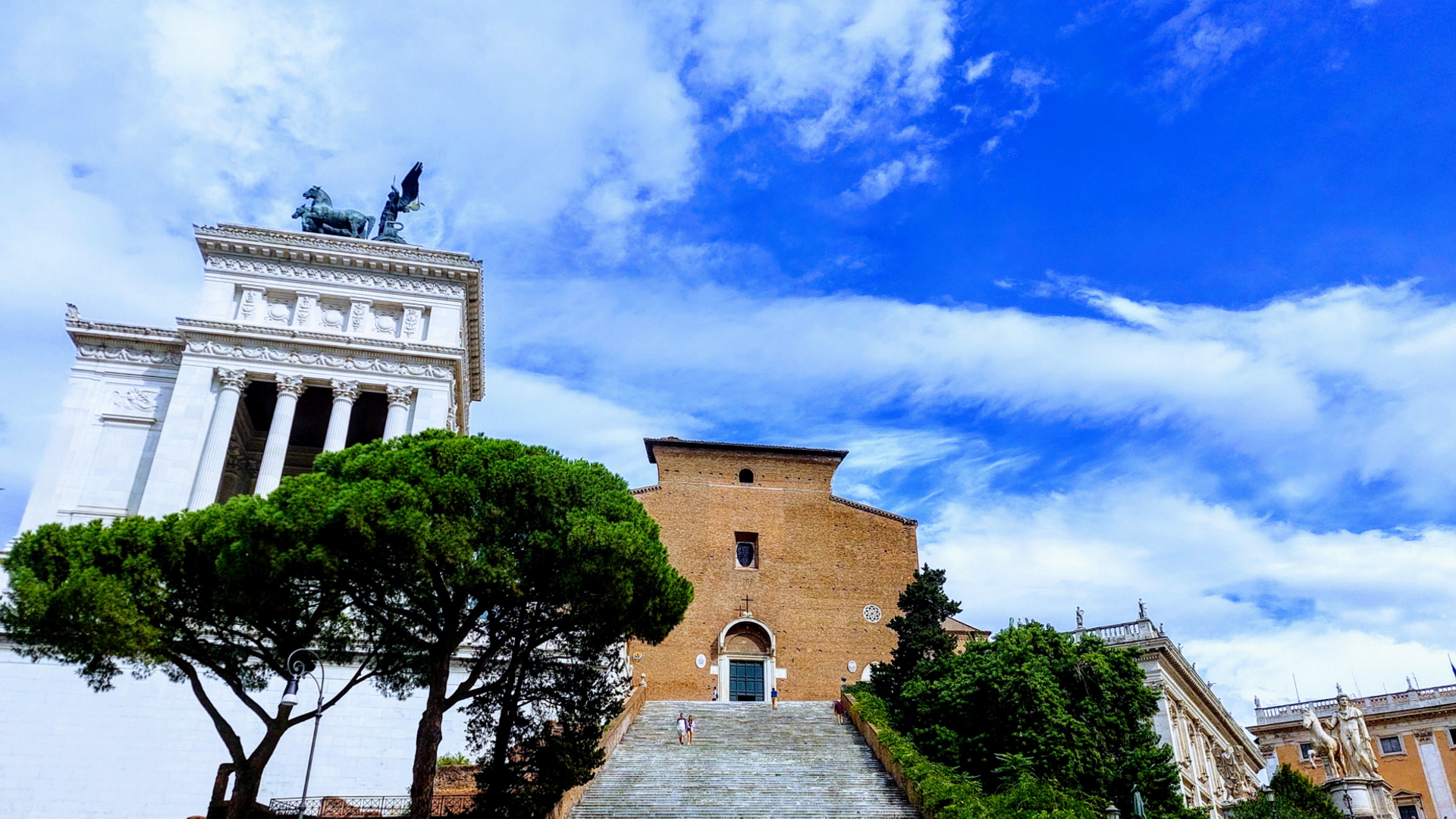
On the right side of the Vittoriano, two equally spectacular stairs rise to the ancient mons Capitolinus: about two hundred years separate the two works but the contrast between the hard essentiality of one of the two and the harmony of the other reveals the irreversible change in the spirit of the times. If the monumental Cordonata designed by Michelangelo as part of the redesign of the Campidoglio, for the coming to Rome of Emperor Charles V, is in fact one of the symbols of Renaissance Rome, the steep staircase next to it leads us into the Middle Ages.
Its 124 steps of ancient marble probably come from the remains of Temple of Serapis on the Quirinal Hill and lead to the northern summit of the Capitoline hill, the so-called Arx. Here stands the church that from the 14th was known as Santa Maria in Aracoeli, probably already founded in the 6th century with an adjoining monastery. In 1250 the ownership of the site had in the meantime passed to the Franciscans who began its restructuring, giving the church the Romanesque-Gothic forms we see today and changing its entrance and orientation – no longer towards the Roman Forum but towards Campo Marzio district and St. Peter’s Basilica. A new imposing staircase was also built to connect the church to the city and overcome the great difference in height with the road below. Built by Lorenzo di Simone Andreozzi at the expense of the Roman people as a thanksgiving to the Virgin for having saved the city from the plague, it would have cost 5,000 florins and was inaugurated, according to legend, by the tribune Cola di Rienzo.
In the 17th century, peasants who came to the city to sell their products used to sleep on the steps, until Prince Caffarelli, who lived nearby, chased them away by rolling barrels full of stones on the stairs that overwhelmed the sleepers. To avoid other accidents, the staircase was closed with large gates, which remained in place until the end of the 19th century. The staircase was also considered a real “holy staircase” to be walked on knees to receive the desired grace. Its power would also extend to the Lotto game: tradition has it that, to get the winning numbers, it is enough to climb it on your knees at night, reciting Ave Marias and De Profundis and recommending yourself to the Magi. Seeing is believing...
The Basilica of Santa Maria in Aracoeli
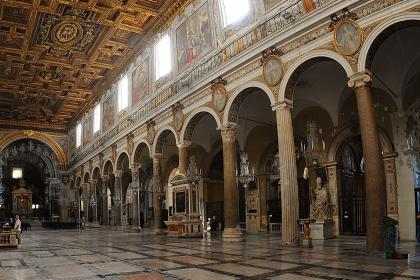
 Condividi
Condividi
Piazza Venezia
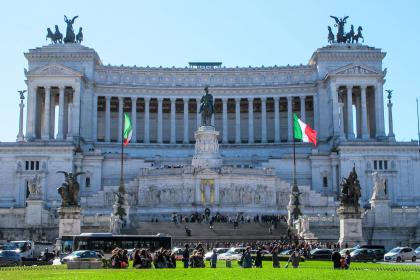
 Condividi
Condividi
The Capitoline Hill: a place of legends
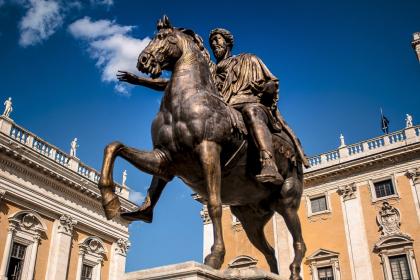
Monument to Vittorio Emanuele II (Vittoriano)
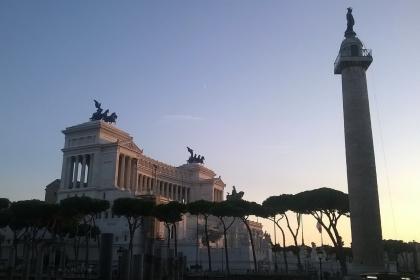
 Condividi
Condividi
Information
 Condividi
Condividi
Location
To find out about all accessibility services, visit the Rome accessible section.











































